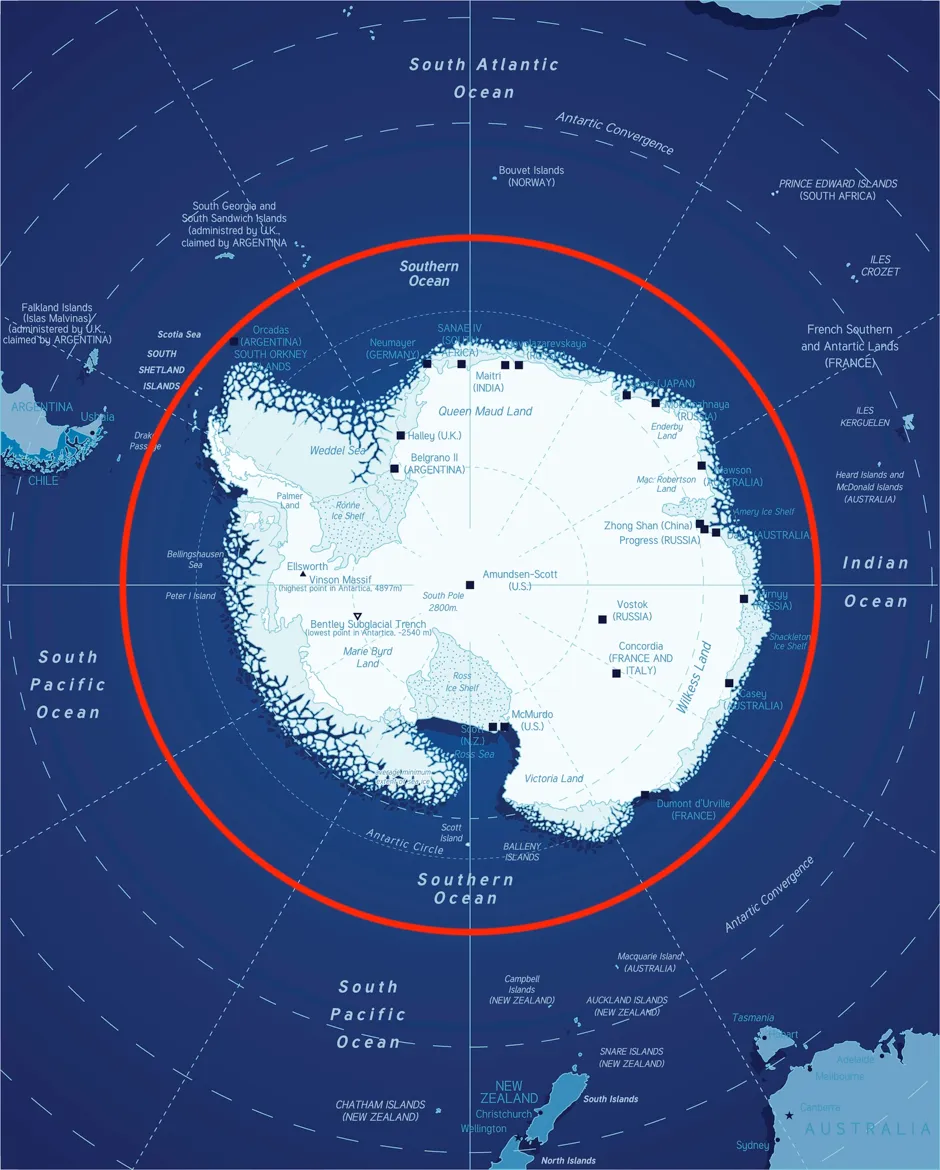It's time to update your maps, because the Earth now has a total of five oceans.
Though accepted by scientists for some time, the Southern Ocean wouldn't be found on any National Geographic maps – until now.
Cartographers at the National Geographic officially recognised the fifth ocean on World Ocean Day, 8 June 2021. The 'new' ocean borders the Pacific, Atlantic and Indian Oceans, which is why geographers had argued for some time as to whether it was in fact unique enough to be classed as a different ocean, or just cold regions of the three oceans.
"There is of course just one interconnected world ocean, but it has traditionally been divided into four regions: the Pacific, Atlantic, Arctic, and Indian oceans," said Alex Tait on Twitter, who is a geographer in the National Geographic Society.
"Scientists have known for many years that the icy waters around Antarctica form a distinct ecological region defined by ocean currents and temperatures. But the international community, through the International Hydrographic Organization (IHO), has not agreed on a name and extent of this fifth ocean region."
While many called this region the Southern Ocean, some scientists called it the Antarctic Ocean, others said Austral Ocean. Either way, it is distinct enough to be deserving of its new status.
Read more about Antarctica:
- Antarctica rainforest once basked in 19°C summer temperatures
- Evidence of 2,000km-wide asteroid impact crater in Antarctica discovered
Where is the Southern Ocean?
"The Southern Ocean stretches from the Antarctic continent to the line of latitude at 60° south, which marks the approximate edge of a strong underwater current, the Antarctic Circumpolar Current," explains Dr Helen Scales, a marine biologist and author of The Brilliant Abyss: True Tales of Exploring the Deep Sea, Discovering Hidden Life and Selling the Seabed.
"As it swirls clockwise around Antarctica, this current plays a vital role in the climate and ecology of the region, essentially by keeping it cold."

Scales says the Antarctic Circumpolar Current first formed more than 30 million years ago, when South America pulled way from Antarctica, leaving a gap for the current pass through. "Since then, the current has effectively been isolating the Southern Ocean from warmer currents further north," she says.
What makes the Southern Ocean unique?
"The Southern Ocean is home to a unique assembly of marine wildlife that thrives in these cold, icy seas," explains Scales. "From minke whales and leopard seals, to emperor penguins, orca and recovering populations of humpback whales."
The ocean's ecosystem thrives on huge numbers of Antarctic krill. These tiny, shrimp-like crustaceans may be small fry at the bottom of the food chain, but they are one of the most important animals in the Southern Ocean.
"Many of the animals in the Southern Ocean either eat krill, or eat the animals that eat krill," says Scales.
What's in a name?
If researchers have long separated the Southern Ocean from the other four, why does it matter that it has now been recognised? Did it really need to be official?
"More than anything, I think this matters because it raises the profile in the public eye of this critically important part of the global ocean," says Scales.

"The Southern Ocean is unique biologically, it faces critical threats from climate change while at the same time it is home to some of the most intact marine ecosystems on the planet, which urgently need as much protection as possible to keep them that way."
About our expert: Dr Helen Scales
Dr Helen Scales is a marine biologist, broadcaster and science writer. She currently teaches at Cambridge University while also acting as a science advisor for the marine conservation charity Sea Changers. Her work has featured in several peer-reviewed journals, includingProgress in Physical Geography: Earth and Environment and Proceedings of the Royal Society B. She is the author ofSpirals in TimeandThe Brilliant Abyss.
Read more about the ocean:
